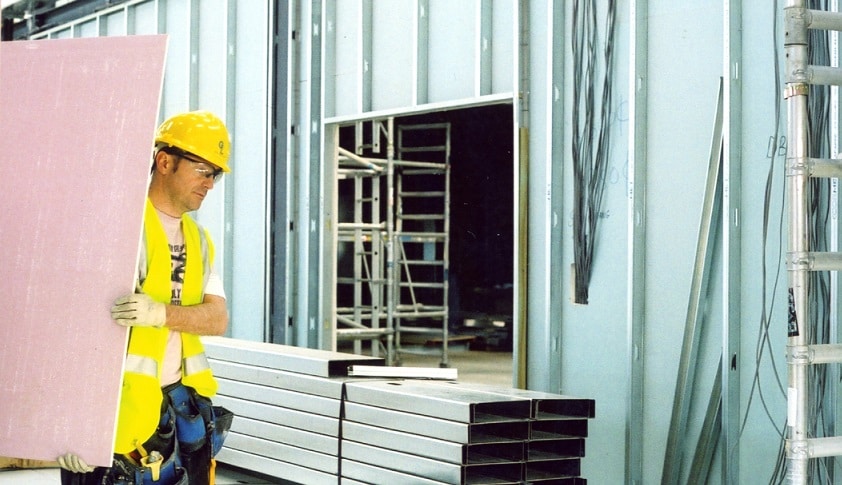Even though most construction firms are aware of their responsibility for carrying out manual handling assessments, what those assessments need to include is not always as well understood. David Cant from Veritas Consulting provides some concise information and useful tips on what to include in your manual handling risk assessments.
Handling building materials
Every employee on a construction site will need to handle building materials at some point; the key is to do so safely. One of the fundamental principles of any handling assessment is to decide how to reduce manual handling as much as possible.
Your assessment should:
- Consider where mechanical lifting can be employed to reduce manual handling.
- Ensure that mechanical lifting equipment is fit-for-purpose and can be operated safely on-site.
- Identify the employee training required for both lifting machinery operations and manual handling.
Bonus tip: Ensure the risk assessment also covers a safety inspection of the lifting and handling equipment.
Working with plasterboard
Plasterboard is heavy and unwieldy and presents a risk to employee health and safety when handled incorrectly. Your initial workplace assessment should cover factors including:
- Safe handling of plasterboard to avoid injury should it be dropped on-site.
- Ensuring that the correct fastenings are used to hold plasterboard in place to avoid accidents in future.
- Providing suitable masks or dust-extraction facilities to prevent workers inhaling plaster dust that can cause serious lung damage.
Bonus tip: Think long term with securing your plasterboard – panels could still pose a health and safety risk long into the future if fitted incorrectly.
Framing stud safety
Metal studding is an essential part of every modern building project and can be found on almost every site across the country. But this familiarity may also lead to important safety issues being overlooked. Always remember that your assessment should include:
- Safe handling of the tools and fixings required to work with studding, including saws, drills and hammers.
- Awareness of any electrical cabling, water and gas pipes that could be damaged in the process of fitting studding.
- Considerations for any personal protective equipment (PPE) that would better safeguard your workers.
Bonus tip: Don’t forget that transporting metal studding around the site is potentially dangerous. Make sure that your assessment makes provisions for this too.
The dangers of fitting doors
It almost seems stupid to say, but even hanging doors on-site needs at least a cursory assessment to mitigate potential risks to workers. Probably best performed as part of a wider risk assessment, you need to consider:
- Will the process of fitting doors obstruct any fire escapes? What is the contingency plan?
- Do you have measures in place to stop people passing through halls and doorways as the doors are being hung?
- Is there any PPE or other specialist equipment required to fit doors safely?
Bonus tip: Are the doors being fitted compliant with building regulations? This should have been sorted as part of the planning stage, but it’s always worth a double check.
Checking suspended ceilings
Suspended ceilings are incredibly common in buildings new and old, and are another easily overlooked aspect of a construction project. Before beginning work, make sure that you assess:
- Whether employees are properly trained for working at heights.
- That your team has adequate ladders and lifting gear for fitting the ceiling.
- Whether there are electrical cables, pipes or other hazards that need to be managed as your employees work in the ceiling space.
Bonus tip: When replacing or renewing a suspended ceiling, make sure your assessment also considers the presence of asbestos dust in the crawlspace.
As you can see, even the most mundane objects present a potential hazard on construction sites and need to be considered as part of your general risk assessments. That’s not to say that these assessments need to be hugely detailed, though, merely that each sector of the site, and each task workers undertake, needs to be checked.
You also need to act on every identified risk to raise the general standards of safety across the site. Still got a few questions? Give the Veritas Consulting team a call and we’ll help you nail down the details of effective manual handling risk assessments.
Find out more:
David Cant, Veritas Consulting
www.veritas-consulting.co.uk


